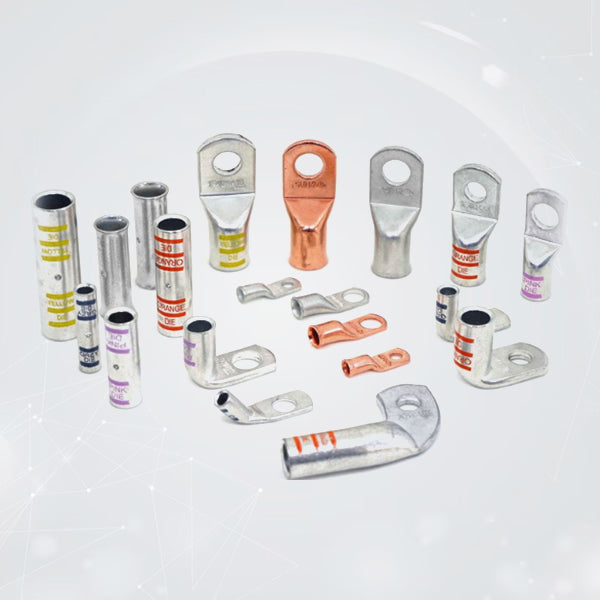
Extending the Life of Your Electrical Connections with 4 AWG Tinned Lugs
In the intricate world of electrical systems, the longevity and reliability of connections are paramount. A single point of failure in a connection can disrupt operations, cause equipment malfunction, and even pose safety hazards. Among the various factors that contribute to connection longevity, the choice of connectors plays a crucial role. 4 AWG tinned lug stand out as a superior option for many applications, offering a unique combination of conductivity and corrosion resistance that significantly extends the lifespan of electrical connections. This guide explores the benefits of using 4 AWG tinned lugs and provides practical advice on how to maximize their performance and ensure long-term reliability.
Understanding 4 AWG Tinned Lugs
Before delving into the advantages of 4 gauge tinned lugs, it's essential to understand their specifications and applications. "AWG" stands for American Wire Gauge, a standardized system for measuring wire diameter. 4 AWG represents a wire size commonly used in medium to high current applications, such as connecting batteries, powering amplifiers, and wiring industrial equipment.
4 AWG tinned lugs are specifically designed to terminate 4 AWG cables. These lugs provide a secure and efficient connection point, facilitating the transfer of electrical energy between the cable and other components in the system. They are typically constructed from high-conductivity copper, a material chosen for its ability to minimize resistance and ensure a smooth flow of electricity.
The term "tinned" refers to the coating of tin applied to the copper lug. This tin plating serves a crucial purpose: enhancing corrosion resistance. In many applications, electrical connections are exposed to harsh environmental conditions, including moisture, chemicals, and temperature extremes. The tin coating acts as a protective barrier, preventing oxidation of the copper and ensuring a reliable connection over extended periods.
The Importance of Connection Longevity
The longevity of electrical connections is a critical factor in the overall reliability and efficiency of electrical systems. Frequent connection failures lead to:
- Downtime: Equipment malfunction due to connection failures results in costly downtime, disrupting operations and reducing productivity.
- Maintenance Costs: Replacing corroded or failed connectors increases maintenance costs and consumes valuable resources.
- Safety Hazards: Overheating and arcing caused by poor connections pose significant safety hazards, including fire risks and potential damage to equipment.
Therefore, choosing connectors that promote longevity is a strategic investment in the long-term health and performance of electrical systems.
Benefits of Using 4 AWG Tinned Lugs for Extended Life
4 AWG tinned lugs offer several key advantages that contribute to the extended life and reliability of electrical connections:
- Superior Corrosion Resistance: The tin plating on 4 awg tinned copper lugs provides exceptional protection against corrosion, a primary cause of connection failure. Corrosion increases resistance, reduces conductivity, and weakens the connection, eventually leading to failure. The tin coating acts as a sacrificial anode, protecting the copper from oxidation and other forms of degradation. This is particularly important in marine, automotive, and industrial applications where connections are exposed to harsh environments.
- Minimized Resistance: Copper is an excellent conductor of electricity, and the tin plating does not significantly impede its conductivity. 4 AWG tinned lugs provide a low-resistance connection, ensuring efficient power transfer and minimizing energy loss in the form of heat. Low resistance is crucial for preventing overheating and maintaining system efficiency over time.
- Enhanced Durability: The combination of copper's conductivity and tin's corrosion resistance results in a durable and long-lasting connector. 4 AWG tinned lugs are designed to withstand vibration, mechanical stress, and temperature fluctuations, ensuring a reliable connection even in demanding conditions.
- Reduced Maintenance: The corrosion resistance and durability of 4 AWG lugs translate to reduced maintenance requirements. Connections remain stable and reliable for extended periods, minimizing the need for frequent inspections, cleaning, and replacements. This saves time, labor, and resources.
Best Practices for Maximizing Connection Life with 4 AWG Tinned Lugs
To fully leverage the benefits of 4 gauge lugs and ensure the longest possible lifespan for electrical connections, it's essential to follow best practices for installation and maintenance:
- Proper Lug Selection: Choose the correct size and type of 4 AWG tinned lug for the wire and the application. Ensure that the lug is rated for the current and voltage requirements of the circuit.
- Cable Preparation: Prepare the cable correctly by stripping the insulation to the appropriate length and ensuring that the wire strands are clean and undamaged.
- Crimping Technique: Use a crimping tool that is designed for the specific size and type of lug. Apply firm, even pressure to create a secure and gas-tight crimp. A proper crimp is essential for maximizing conductivity and preventing corrosion.
- Connection Protection: In particularly harsh environments, consider using additional protection, such as heat shrink tubing, to seal the connection and provide further protection against moisture and contaminants.
- Regular Inspection: Periodically inspect the connections for any signs of corrosion, loosening, or damage. Clean and tighten the connections as needed.
Technical Details Recap
- Cable Size: 4 AWG
- Lug Material: Copper with Tin Plating
- Key Benefit: Enhanced Corrosion Resistance for Extended Life
By utilizing 4 awg tinned copper wire lugs and adhering to best practices for installation and maintenance, professionals and enthusiasts can significantly extend the life of their electrical connections, ensuring reliable and efficient performance for years to com

